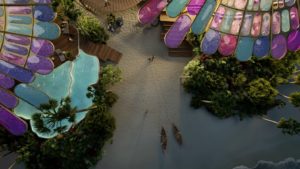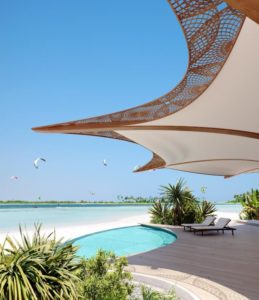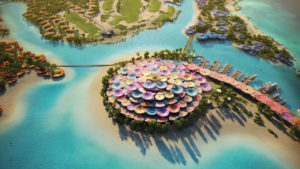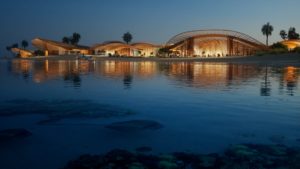One of the world’s most ambitious regenerative tourism projects, “Coral Bloom” resort is being planned on the Shurayrah island in the Red Sea. Part of The Red Sea Project, Coral Bloom includes 11 luxury hotels that blend into the pristine Shurayrah Island, their designs taking cues from Saudi Arabia’s native coral reefs.
Launched by his Prince Mohammed bin Salman, Chairman of The Red Sea Development Company (TRSDC), the design aims to blend in with the natural environment and the development creates a new vision for Shurayrah. The island is surrounded by corals and is home to the world’s fourth largest coral reef system, as well as a number of endangered species. The project has therefore taken a holistic approach in ensuring that the ecological footprint of the site’s development works, as well as the maintenance and day-to-day operations of the sites, are a net positive for the creatures and landscapes that surround the destination. Biodiversity considerations have taken center stage throughout the planning process, and disruption of the island’s mangroves and other habitats will be avoided. In addition, new habitats will be constructed through landscaping to enhance the island’s natural beauty.
Backed by Saudi Arabia’s sovereign wealth fund, the Public Investment Fund (PIF), and part of the flagship development the Red Sea Project, Coral Bloom has been designed by the world-renowned British architectural firm Foster + Partners. The project is designed to blend in with the island’s pristine natural environment. It will truly immerse guests in the natural beauty of the Red Sea, offering ground-breaking architecture and sustainable design that not only meets but exceeds global traveller expectations.
The commitment is to go beyond sustainability and set new standards in regenerative tourism by ensuring that the natural environment is preserved and enhanced. About 75 percent of the island archipelago will remain untouched as part of the goal to achieve a 30 percent net conservation benefit over the next two decades. These are bold ambitions and no mean feat for a project of this size.
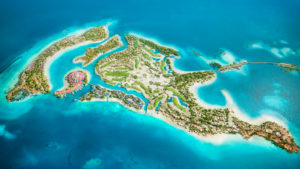
The resorts themselves will be constructed from lightweight materials and manufactured off-site, resulting in a low-impact construction project. The low profiles of the buildings will also ensure that the surrounding vistas will be unimpeded from view, allowing visitors to enjoy the surrounding beauty at their leisure.
Behind the scenes, the Red Sea Development company has committed to delivering a 30% net conservation benefit by 2040, while using the world’s largest district cooling plant, which will be powered by 100% renewable energy 24 hours a day.
Aerial view of the Coral Bloom luxury resort imagined by Foster + Partners
The luxury resort design protects and enhances the biodiversity it is imagined in, planned such that the island’s mangroves and other habitats remain undisturbed. This guarantees that they remain as a natural stronghold against erosions, while new ecologies keep flourishing, enhancing the island’s beauty.
Upon completion in 2030, The Red Sea Project will comprise 50 resorts, offering up to 8,000 hotel rooms and around 1,300 residential properties across 22 islands and six inland sites. The destination will also include luxury marinas, golf courses, entertainment and leisure facilities.”
Saudi Arabia’s Vision 2030 aims to diversify the Kingdom’s economy away from a reliance on oil and push the tourism sector to contribute 10 percent of gross domestic product.
Images Courtesy :The Red Sea Development Company & Foster + Partners

